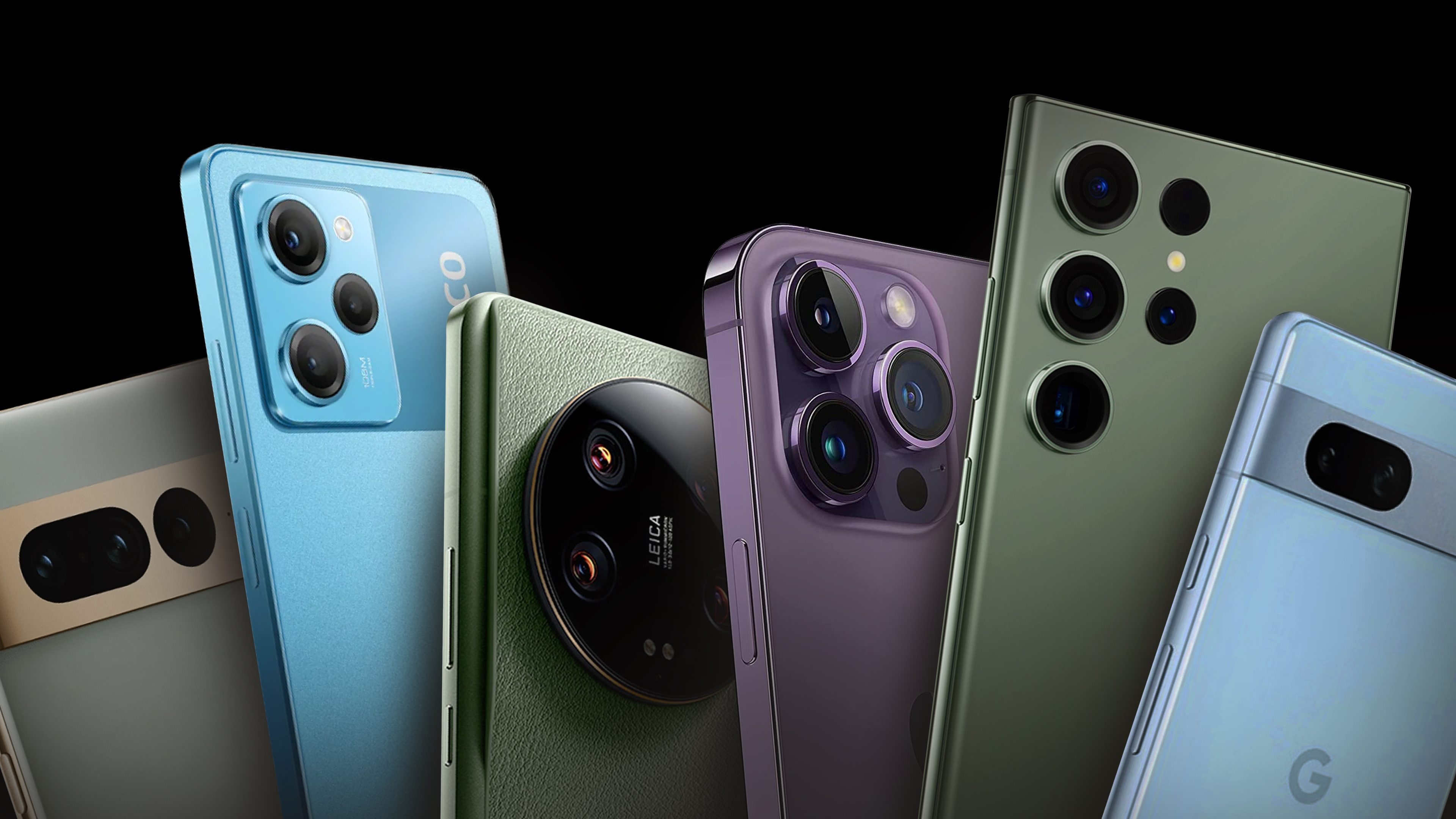
The best camera phones in 2023 compared
| The best camera smartphone in 2023 | The best Android alternative | The best camera iPhone | Best camera up to $1,000 | Best camera up to $500 | Best camera up to $400 | Best camera up to 300 Euro | |
|---|---|---|---|---|---|---|---|
| Device | Xiaomi 13 Ultra | ||||||
| Image |
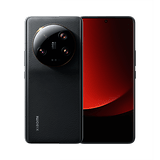 |
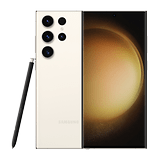 |
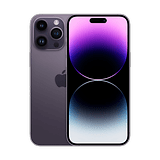 |
 |
|
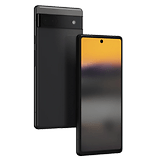 |
 |
| Price | Unknown Import: $1,283 |
from $1,439.99 | from $1,099 (Pro Max) from $999 (Pro) |
from $899 | from $499 | $349 | approx. $280 |
| Screen | 6.73″ OLED 3,200 × 1,440 pixels 120 Hz LTPO refresh rate |
6.8″ AMOLED 3,088 × 1,440 pixels 120 Hz LTPO refresh rate |
6.7″ OLED (Pro Max) 6.1″ OLED (Pro) 2,796 × 1,290 pixels (Pro Max) 2,556 × 1,179 pixels (Pro) 120 Hz LTPO refresh rate |
6.7″ OLED 3,120 × 1,440 pixels 120 Hz LTPO refresh rate |
6.1″ OLED |
6.1″ OLED display 2,400 × 1,080 pixels 90 Hz refresh rate |
6.67” AMOLED 2,400 × 1,080 pixels 120 Hz |
| SoC | Qualcomm Snapdragon 8 Gen 2 | Qualcomm Snapdragon 8 Gen 2 | Apple A16 Bionic | Google Tensor G2 | Google Tensor G2 | Google Tensor | Snapdragon 778G |
| RAM | 16 GB LPDDR5X RAM | 12 GB LPDDR5X RAM | unknown | 12 GB LPDDR5 RAM | 8 GB LPDDR5 RAM | 6 GB LPDDR5 RAM | 6 / 8 GB RAM |
| Memory | 512 GB UFS 4.0 | 256 / 512 GB / 1 TB UFS 4.0 | 128 GB / 256 GB / 512 GB / 1 TB | 128 / 256 GB UFS 3.1 | 128 / 256 GB UFS 3.1 | 128 GB UFS 3.1 | 128 / 256 GB |
| Expandable memory | ❌ | ❌ | ❌ | ❌ | ❌ | ❌ | ❌ |
| OS | Android 13 with MIUI 14 | Android 13 with One UI 5.1 | iOS 16 | Android 13 | Android 13 | Android 12 | Android 12 with MIUI 14 |
| Camera | Main camera: 50 MP, f/1.9 Ultra-wide angle: 50 MP, f/1.8 Tele 1: 50 MP, f/1.8 Tele 2: 50 MP, f/3.0 |
Main camera: 200 MP, f/1.7 Ultra-wide angle: 12 MP, f/2.2 Tele 1: 10 MP, f/2.4 Tele 2: 10 MP, f/4.9 |
Main camera: 48 MP, f/1.78 Ultra-wide angle: 12 MP, f/2.2 Telephoto: 10 MP, f/1.78 |
Main camera: 50 MP, f/1.85 Ultra-wide angle: 12 MP, f/2.2 Telephoto: 48 MP, f/3.5 |
Main camera: 64 MP, f1.89 Ultra-wide angle: 13 MP, f/2.2 |
Main camera: 12.2 MP, f/1.7 Ultra-wide angle: 12.2 MP, f/2.2 |
Main camera: 108 MP, f/1.9 Ultra-wide angle: 8 MP, f/2.2 Macro camera: 2 MP, f/2.4 |
| Selfie camera | 32 MP, f/2.0 aperture | 12 MP, f/2.2 aperture | 12 MP, aperture f/1.9 | 10.8 MP, aperture f/2.2 | 13 MP, aperture f/2.2 | 8 MP, aperture f/2.0 | 16 MP, f/2.4 |
| Battery | 5,000 mAh Charging via cable 90 W |
5,000 mAh Charging via cable 45 W |
5,000 mAh Charging by cable 20 W |
5,000 mAh Charging by cable 30 W |
4.385 mAh Charging by cable with 18 W |
4,410 mAh Charging by cable with 18 W |
5,000 mAh Charging via cable with 67 W |
| Connectivity | 5G / LTE / Wi-Fi 6 / Wi-Fi Direct / Bluetooth 5.3 / NFC | 5G / LTE / Wi-Fi 6 / Wi-Fi Direct / Bluetooth 5.3 / NFC | 5G / LTE / Wi-Fi 6 / NFC / Bluetooth 5.3 / UWB / Satellite | 5G / LTE / Wi-Fi 6E / Wi-Fi Direct / Bluetooth 5.2 / NFC | Wi-Fi 6E / Bluetooth 5.3 / LTE / 5G / NFC | Wi-Fi / Bluetooth 5.0 / LTE / 5G / NFC | Wi-Fi 6 / 5G / NFC / Bluetooth 5.2 |
| IP Certification | IP68 | IP68 | IP68 | IP68 | IP68 | – | – |
| Colors | Black, White, Olive Green | Black, Cream White, Green, Lavender | Sierra Black, Deep Violet, Silver, Gold | Obsidian, Snow, Hazel | Charcoal, Sea, Snow, Coral | Sage, Charcoal, Chalk | Yellow, Blue, Black |
| Dimensions and weight | 163.18 x 74.64 x 9.06 mm 227 g |
163.4 × 78.1 × 8.9 mm 234 g |
160.7 x 77.6 x 7.9 mm (Pro Max) 147.5 × 71.5 × 7.85 mm, (Pro) 240 g (Pro Max) 206 g (Pro) |
162.9 × 76.6 × 8.9 mm 212 g |
152 × 72.9 × 9.0 mm 193,5 g |
152.2 × 71.8 × 8.9 mm 178 g |
162.91 × 76.03 × 7.9 mm 181 g |
| Rating |
Xiaomi 13 Ultra review |
Samsung Galaxy S23 Ultra review | iPhone 14 Pro Max review | Google Pixel 7 Pro review | Google Pixel 7a review | Google Pixel 6a review | Xiaomi Poco X5 Pro review |
| Buy now* |
Buy from TradingShenzhen |
Check price |
Check price Check price |
Check price |
Check price |
Check price |
Check price |
Of course, there’s more to a smartphone than just a good camera. That’s why you can read in more detail about our selection of the best camera phones below. If you’d like to know, even more, you’ll also find the link to our in-depth review of each smartphone. But first, let’s take a look at what makes a good camera phone in the first place and explain a few basic terms.
Table of Contents:
Buying guide: How to find the best camera phone?
Before we go into more detail about our selection of smartphones with the best cameras, we would first want to elaborate on a few basic smartphone camera features that you will come across time and again in our reviews.
What distinguishes a good camera from a bad one?
Detailed reproduction
When it comes to detailed reproduction of a scene, the more pixels the better. This is because you can print larger photos or crop them later and still end up with a pretty good quality image. While almost all current smartphones offer excellent quality with the main camera, it is the zoom performance that separates the wheat from the chaff. For example, if having powerful zoom is important to you, you should choose a smartphone with two zoom lenses.
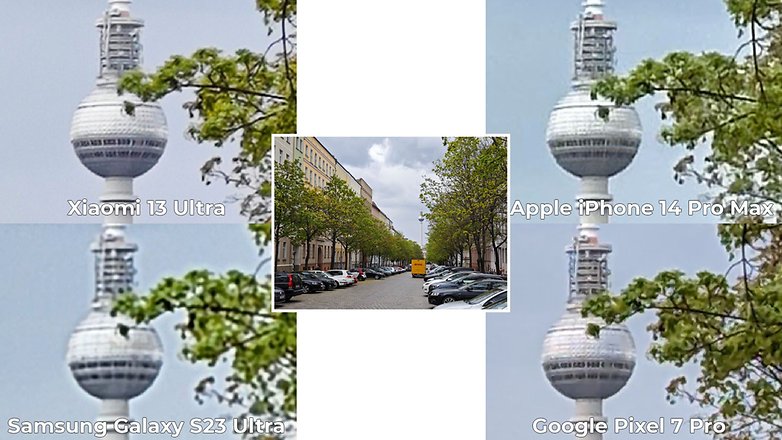
Every smartphone has different strengths and weaknesses, that’s for sure. This is why you should consider where you normally snap photos. The Galaxy S23 Ultra, for example, begins to see visual quality deteriorate more starting from 3x, where it can only shoot at native focal length again at 10x. The Xiaomi 13 Ultra, on the other hand, distributes its lenses more evenly across the entire focal length range.
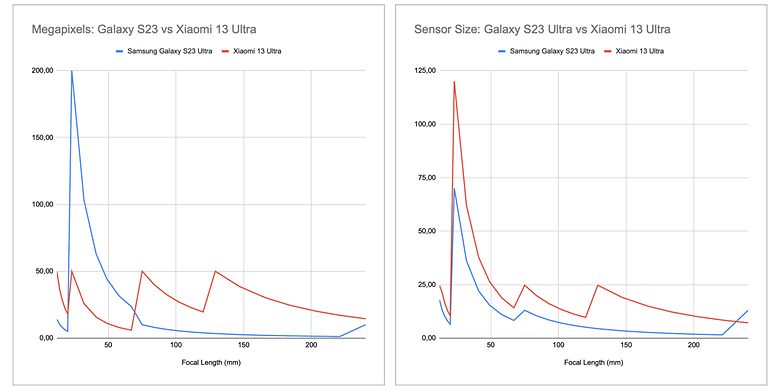
If you do not need plenty of zoom performance but prefer to take panorama shots, then it is best to look out for a powerful camera module behind the ultra-wide angle lens. Of course, a good sensor for the main camera goes a long way, too. Large sensors, in particular, are less susceptible to image noise in low-light conditions.
Finally, the manufacturer’s algorithms always play an important role. Major players like Apple, Samsung, Xiaomi, Google as well as the BBK Group – are traditionally ahead of the minnows in this department.
Colors: White balance
What is “white balance”? Your brain constantly analyzes the ambient light and answers this question for you every second, always ensuring that you can recognize colors relatively correctly. In cameras, image recognition algorithms must continuously handle this “white balance”. This is quite easy to do so in daylight, but the difficulty ramps up in artificial or even mixed light conditions.
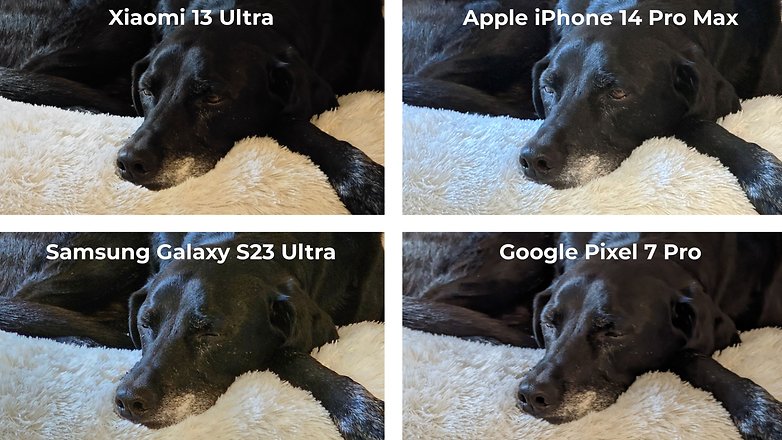
In the subject shown above, cold evening light comes in through the window from the left, and warm artificial light shines on the office dog and the creamy white coat from the right. You can see for yourself here how the four different smartphones handle color temperatures differently. Apple and Samsung are clearly too cold in this picture, the Pixel 7 Pro is very neutral and the Xiaomi 13 Ultra is a bit too warm.
At the same time, you can see the challenge of achieving correct exposure in this picture: Just like the correct white balance, smartphones also have to accurately determine what is really bright and what is dark. Which image do you like best here? I look forward to hearing your opinions in the comments!
Colors: Skin tones
It doesn’t matter if you’re Caucasian, Asian, or African-American: everyone’s skin tone is the same. What does change – in terms of colorimetry – however, is the amount of gray. This, in turn, means that we can determine what is a good color rendering and what is not, regardless of skin type.
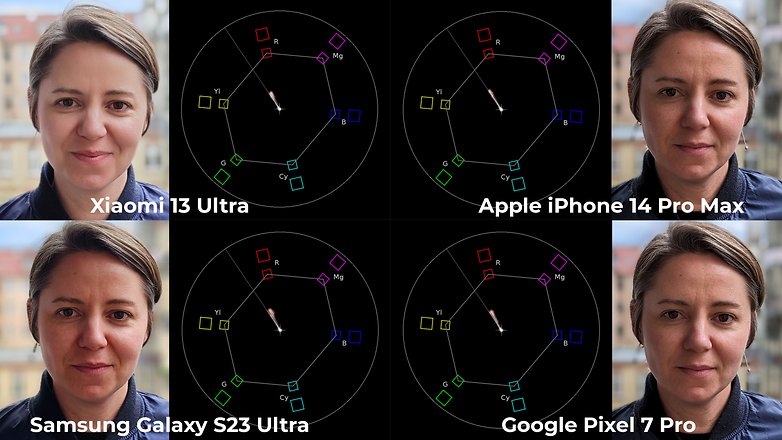
So, what is “good” color reproduction? We can find an answer to this, for example, in the terrific Color Grading Handbook by Alexis Van Hurkman*: For Caucasians, Hurkman recommends a saturation of 40% and about 2° above the “skin tone” line. With this, the iPhone 14 Pro Max would be a tad too yellow-green here, and all smartphones except the Xiaomi 13 Ultra would be a bit too saturated.
Besides that, there are of course numerous other parameters to consider, but most of them can be adjusted. For example, the Xiaomi 13 Ultra flattens faces quite a bit with the default settings but the effect can be changed in portrait mode.
How many cameras are good enough?
Obviously, the more cameras your smartphone has, the more flexible you can be when taking pictures. The main sensors, for example, usually have a focal length of 24 to 26 millimeters, which is equivalent to 35 mm. This corresponds to a relatively large angle of view and is well suited for landscape and city shots, for example.
For portraits or distant subjects, however, you need a telephoto zoom lens, usually between about 70 and 240 millimeters. The higher the resolution of the main camera, the more room you have for a digital zoom without having to rely on a real telephoto lens. It is unfortunate that the law of physics simply sets limits in this aspect. On the other hand, many smartphones offer an ultra-wide angle camera that is suitable for particularly wide subjects.
All other sensors for bokeh, macro, black-and-white, and others fall under the category of “data sheet padding” and have virtually no use.
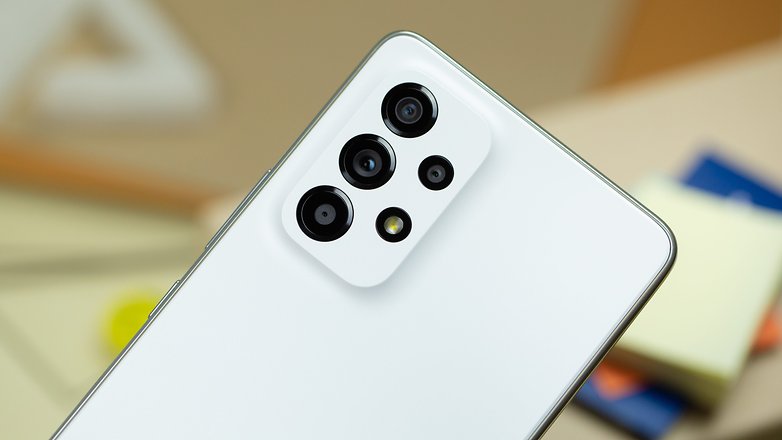
What do focal length and optical zoom mean?
The focal length of a camera is always shown in millimeters. The higher the number, the more “powerful the zoom”, which translates to a greater degree of magnification you get. The main cameras of smartphones usually range from 24 to 26 millimeters in 35 mm equivalent. Ultra-wide-angle cameras with “0.5x” have half the focal length and would be at 12 to 13 millimeters accordingly. A 3x telephoto zoom camera would then be 72 to 78 millimeters in 35 mm equivalent.
The optical zoom of a camera system is the ratio between the smallest and largest focal length. A camera system with 12 to 120 millimeters, therefore, has a 10x zoom. In the case of smartphones, however, the manufacturers usually calculate from the main camera—from 24 to 120 millimeters would therefore be a 5x zoom according to this calculation method, and an ultra-wide angle camera with 12 millimeters is 0.5x.
As if that weren’t weird enough, manufacturers replace the upper optical focal length with an arbitrary maximum value for a digital zoom to calculate the zoom factor—and then come up with a 50x, 100x, or 200x zoom that has long since lost any meaning.
What does the sensor size mean?
Another important point for estimating the image quality is the size of the image sensors in smartphones. The larger the sensor, the more light it captures and, in turn, the better the image quality. The sensor size is usually specified in 1/1.2-inch format—the smaller the number under the fraction, the larger the sensor and the better the expected image quality.
Sensor size is also directly related to pixel size via resolution. Roughly speaking, the pixel size in microns is calculated by dividing the edge length of the sensor by the horizontal or vertical resolution. The larger the pixels, the more light they capture and the better the image quality.
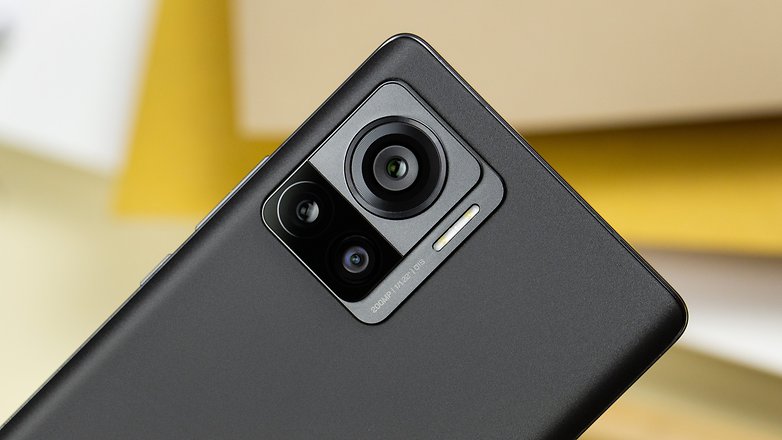
What is an aperture?
The term “aperture” describes the focal length of the optical system in relation to the diameter of the entrance pupil of the lens. It sounds complicated, but you only need to remember one thing here: The smaller the number, the more light is allowed into the sensor, and the less image noise you will theoretically have at night. Therefore, F1.6 is better than F2.0. The f-number is often also written as aperture ratio, then in the format f/2.0.
Of all the technical key data of smartphone cameras, however, one great unknown quantity remains: image processing in the smartphone. The quality of the algorithms that convert the raw data from the sensor into JPEG or HEIC images is often more important than the technical data of the smartphone camera. Therefore, it is always worth taking a look at our sample photo galleries, which NextPit provides in their original size for all current smartphone reviews, apart from the spec sheet.
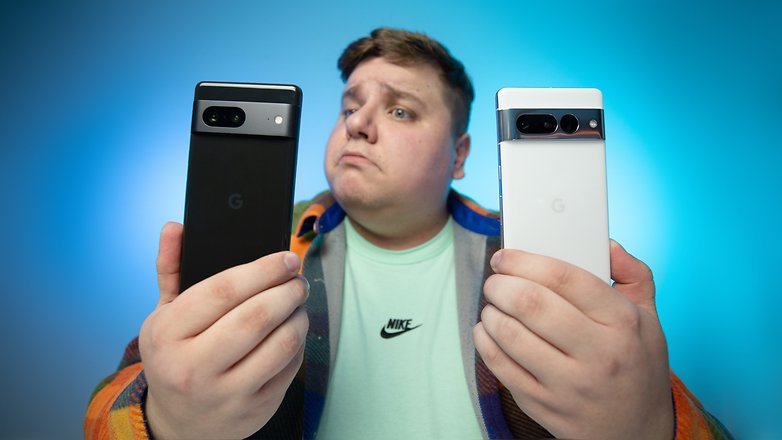
The best camera smartphones in 2023
Some bad news in advance: You cannot buy the most versatile camera smartphone in Europe yet (it will arrive later in May 2023), and neither will it be officially available Stateside. This is because the Xiaomi 13 Ultra, which was introduced in China a few weeks ago and will probably only arrive in Europe not too long after, will be available in limited regions. However, NextPit has already reviewed Xiaomi 13 Ultra and was impressed by its camera.
So if you want a great camera smartphone now, our recommendation would be the Samsung Galaxy S23 Ultra. Otherwise, our favorite is the Xiaomi 13 Ultra. Apple, on the other hand, would naturally have to settle for the iPhone 14 Pro (Max)—with the “Max” suffix having no impact on the camera this year.
If you want a more affordable handset, our recommendation would be to pick a smartphone from Google. The Pixel 7 Pro is the best sub-$1,000 option, while the Pixel 6 and 6a deliver great results below $500 and $400, respectively. Our best value-for-money recommendation for the best camera smartphone for less than $300 hails from Xiaomi yet again with the Poco X5 Pro and its 108-megapixel camera.
The best camera smartphone 2023: Xiaomi 13 Ultra
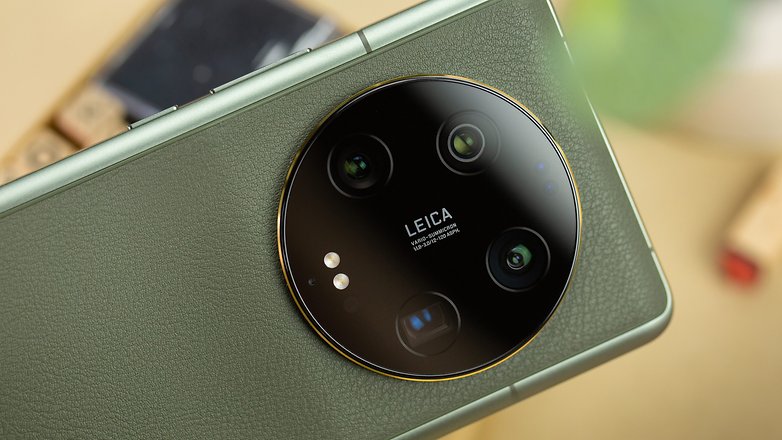
Xiaomi 13 Ultra (China ROM) review
The smartphone with the best camera will arrive in Europe in a few weeks’ time and is known as the Xiaomi 13 Ultra. Not only does the camera smartphone armed with four 50-megapixel image sensors that offer excellent image quality over a large focal length range, taking photos using it is also a lot of fun.
Finally, the video mode with 8K resolution across all image sensors or doing so alternatively via a stepless mega-zoom in 4K quality is thrilling.
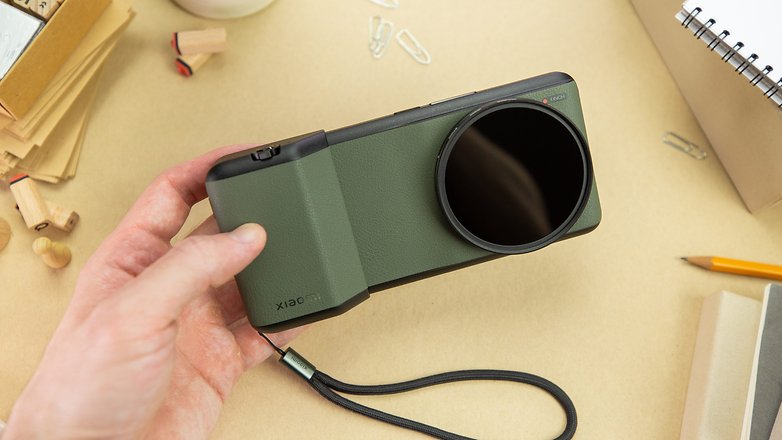
In addition, there is a camera app with countless functions that are simply fun to play with. This begins with the two different Leica color profiles, and extends to long exposure and fixed focus street photo mode, and finally ends somewhere with 14-bit RAW recording and 10-bit log video. Not to forget, there is the optional case that comes with a handle and filter thread.
Xiaomi also offers the full works apart from an outstanding camera system. The Qualcomm Snapdragon 8 Gen 2 SoC under the hood powers the device, alongside a superb 6.73-inch display and a 5,000 mAh battery with 90-watt fast charging. NextPit has already reviewed China ROM version of the Xiaomi 13 Ultra. As soon as we have an EU model, we will finalize the review with additional notes .
If you are in a hurry, the Xiaomi 13 Ultra is currently available from TradingShenzhen for $1,283, albeit running on a Chinese ROM.
The best Android alternative: Samsung Galaxy S23 Ultra
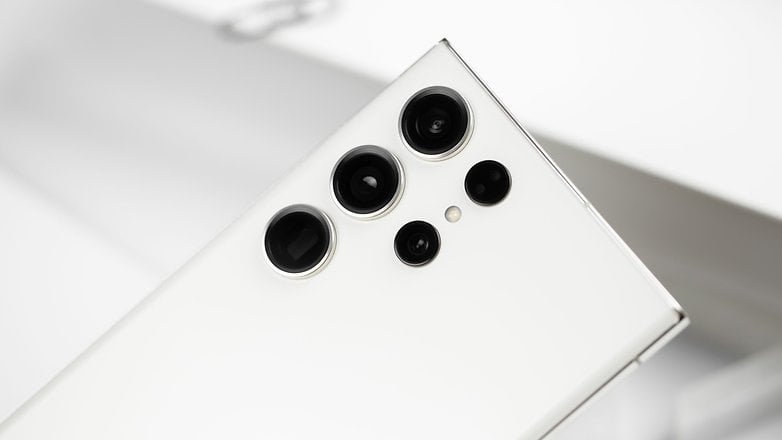
Samsung Galaxy S23 Ultra review
If you want the ultimate flagship, then there is no way around the Samsung Galaxy S23 Ultra, which simply offers incredibly good performance in all aspects. Of course, this also applies to the excellent and enormously versatile camera with the bombastic 200 MP main sensor.
The 10x optical zoom is also really fun, although the large gap in the focal length range reduces its flexibility by quite a bit. There’s also 8K video recording and plenty of exciting shooting modes.
The South Koreans also delivered great performance apart from the camera. From the powerful Snapdragon 8 Gen 2 SoC to the fantastic QHD+ display with a 120 Hz refresh rate and a powerful battery life, the Galaxy S23 Ultra really is “ultra” in all aspects.
This also applies to the software: Samsung’s update policy of four years of Android updates and five years of security patches is simply top-notch.
The best camera iPhone from Apple: iPhone 14 Pro (Max)
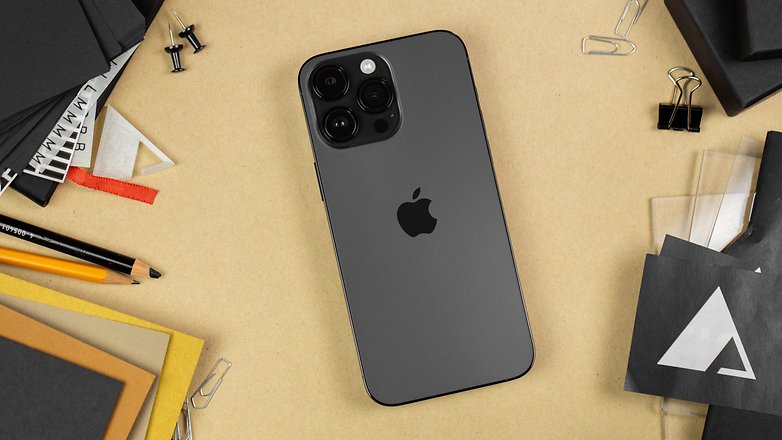
iPhone 14 Pro review / iPhone 14 Pro Max review
The iPhone 14 Pro (Max) is probably the iPhone with the best camera you can buy in early 2023 – and one of the best camera smartphones ever (at least until next year!). In the telephoto range, most competitors in this price range are now superior to the iPhone, such as the Pixel 7 Pro, the Xiaomi 13 Ultra or (especially) the Samsung Galaxy S23 Ultra.
However, the iPhone 14 Pro (Max) has made it to the top 3 in this best list with its compelling night mode, fast and reliable autofocus, and the amazing camera app.
Probably the biggest innovation in the iPhone 14 Pro (Max) lies with its main sensor, which now has a resolution of 48 megapixels. The additional pixels mainly help close the gap between the main camera and the 3x telephoto lens because the camera still has a 12-megapixel section in the center of the image sensor at 2x zoom. Apart from that, however, Apple has tweaked the image quality across all fronts.
Otherwise, the new iPhone 14 Pro and iPhone 14 Pro Max impress with the powerful A16 Bionic SoC and a great display including Always-On feature and Dynamic Island. However, you will still have to make do without fast charging in 2022, and apart from the display island, virtually nothing has changed in terms of design.
Best camera smartphone up to $1,000: Google Pixel 7 Pro
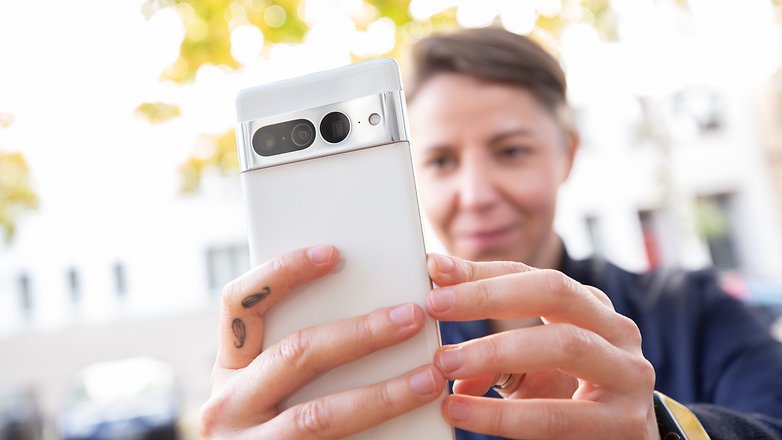
Google Pixel 7 Pro review
The Google Pixel 7 Pro currently has the best camera within the $1,000 price bracket, allowing it to be on par with the evidently more expensive and somewhat newer Galaxy S23 Ultra in certain aspects.
Whether you take pictures during the day or at night, the smartphone simply delivers outstanding, amazing, and very natural photos. In addition, the striking camera module offers powerful zoom and numerous smart features. For instance, you can remove unwanted people or objects from the photo with a single tap.
Like the iPhone 14 Pro (Max), the Google Pixel 7 Pro also offers a really great display. The AMOLED panel is simply fun to use with up to a 120 Hz refresh rate. Finally, the new Tensor SoC offers a convincing performance with an above-average battery life at the same time. What more can you ask for?
You should definitely get a case, because the smartphone does get quite slippery. If you are one of the few people without a USB-C charger, you will also need one. Google ships the Pixel 7 Pro without a power adapter. You do not need a particularly expensive power adapter because the maximum charging speed of 30 watts is rather modest.
Best camera smartphone up to $500: Google Pixel 7a
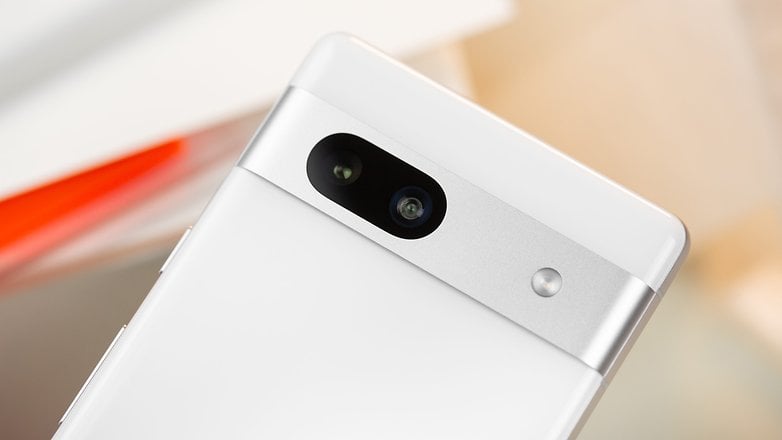
Google Pixel 7a review
The Google Pixel 7a is priced right at $499. The Pixel 7a delivers absolutely bombastic picture quality, both during the day and at night. The new, larger sensor of the main camera is responsible for that—and of course Google’s proven image processing algorithms. If you do not believe us, just take a look for yourself in the following picture gallery.
The Pixel 7a is also a great smartphone apart from the camera. Thanks to the Tensor G2 SoC, performance is excellent, the display is fun with a 90 Hz refresh rate at last, and of course, you benefit from a long Android update policy from Google. If you also want to access the AI services and features presented at Google I/O 2023 as soon as possible, then you have come to the right place. Who doesn’t want a wallpaper made of turd emojis?
Best camera smartphone up to $400: Google Pixel 6a

Google Pixel 6a review
One thing that the camera in the Google Pixel 6a will not win is the prize for the smartphone with the most cameras under the $400 price bracket. The smartphone only has a dual camera configuration and does without the macro and bokeh sensors, which are both common and gimmicky in this price range.
In return, both cameras benefit from Google’s sophisticated image processing algorithms and deliver really great photos – almost on the level of the major Pixels.
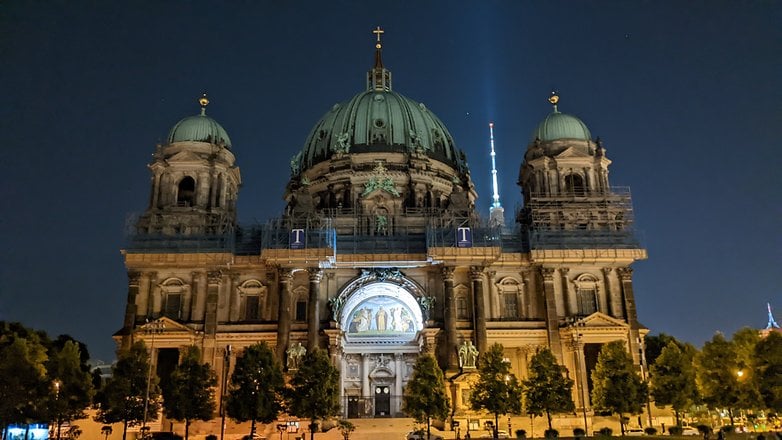
Apart from the camera, the Pixel 6a is easy to use with its stock Android and long-term update policy, accompanied by powerful performance. The Pixel 6a is equipped with the Tensor SoC found in its bigger siblings, the Pixel 6 and Pixel 6 Pro, and has IP67 certification against dust and water which is not something you will find in other handsets within this price range. The only thing you have to like is the form factor: The Pixel 6a is relatively compact.
Competition such as Xiaomi does better compared to the Pixel 6a would be the display. The display of the Pixel 6a has a maximum refresh rate of 60 Hz. You will also not find wireless charging in this handset, with wired charging happening only at 18 watts.
Best camera smartphone up to $300: Xiaomi Poco X5 Pro
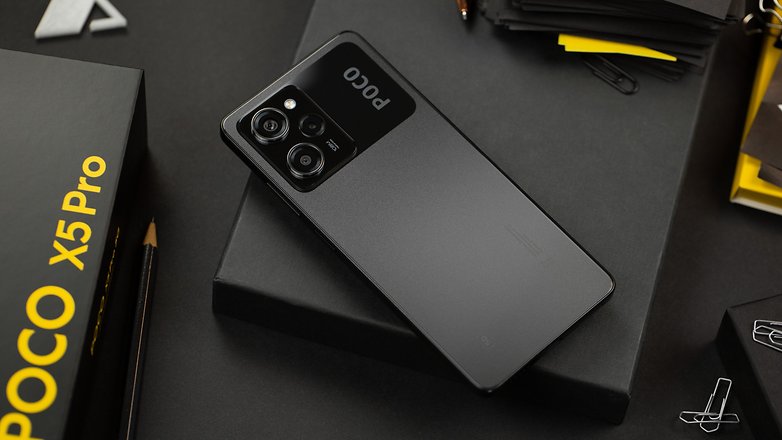
Poco X5 Pro 5G review
The Poco X5 Pro 5G is not only a smartphone with an excellent camera for less than $300, it also topped our best list of the best sub-$300 smartphone in terms of picture quality. The camera configuration impressed my colleague Casi Dress with good picture quality in the review, especially with the 108-megapixel main camera.
What else is there? Quick-charging at 67 watts, a great 120 Hz display, and decent performance thanks to the Qualcomm Snapdragon 778G SoC. However, the Poco X5 Pro still lags behind in terms of updates: Two major Android updates and three years of security patches are currently what you get.
Samsung is already far ahead with its update policy, not to mention Xiaomi with its flagships as well. Thus, there is hope for the mid-range to follow in Samsung’s steps.
What do you think of our selection? What models did we miss out on that you think should be included? We’d love to hear your feedback in the comments.
This article was completely rewritten in May 2023. The previous comments have been retained.







